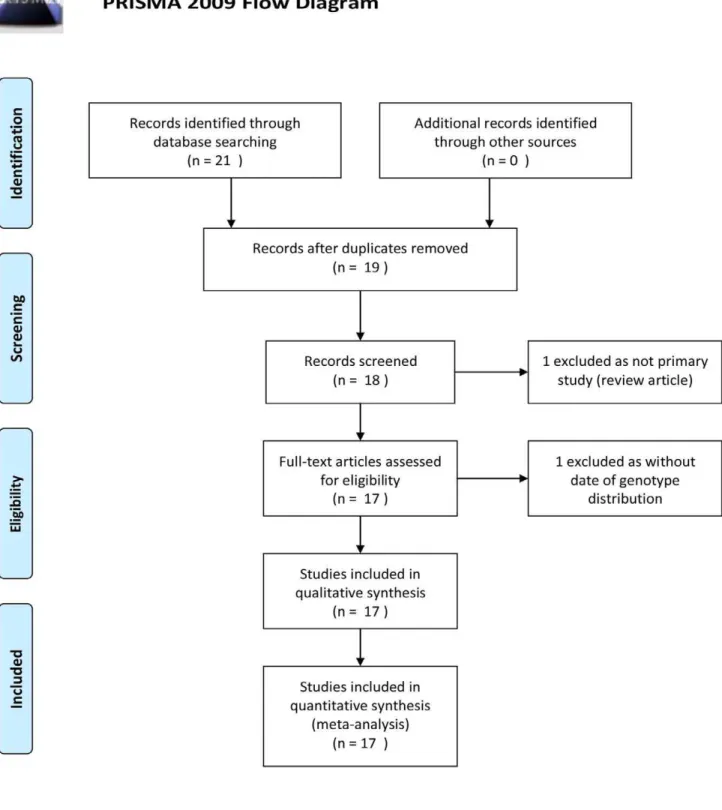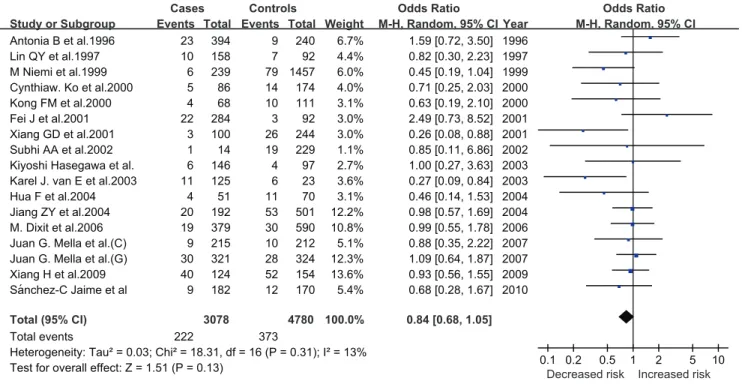A meta-analysis of apolipoprotein E gene ε2/ε3/ε4 polymorphism for gallbladder stone disease.
Texto
Imagem



Documentos relacionados
In the present study, we characterized the IL-8 -251T > A and IL-1 a -889C > T polymorphisms in AD patients, healthy young and elderly control groups.. We also investi- gated
The inclusion criteria for the gene association studies in this meta-analysis were as follows: (1) independently published case-control studies explored the association between
Objectives: The aim of this study was to investigate the presence of the polymorphism in inhibitor of plasminogen activator type 1 (PAI-1) and apolipoprotein E (ApoE) genes and
countries; the frequency of the risk APOE 4 allele in Serbian population is the lowest among the.. listed
Background: Studies have suggested controversial results regarding a possible association between pre-eclampsia (PE) and periodontal disease (PD) and no meta-analysis has been
Background: A number of case-control studies were conducted to investigate the association of apolipoprotein E (Apo E) polymorphisms with primary open angle glaucoma (POAG).. But
Single effects of apolipoprotein B, (a), and E polymorphisms and interaction between plasminogen activator inhibitor-1 and apolipoprotein(a) genotypes and the risk of coronary
Results: A total of 10, 3, and 3 studies were included in the analyses of the association between ApoB-100 XbaI, EcoRI, or insertion/deletion (ID) polymorphisms and the GS